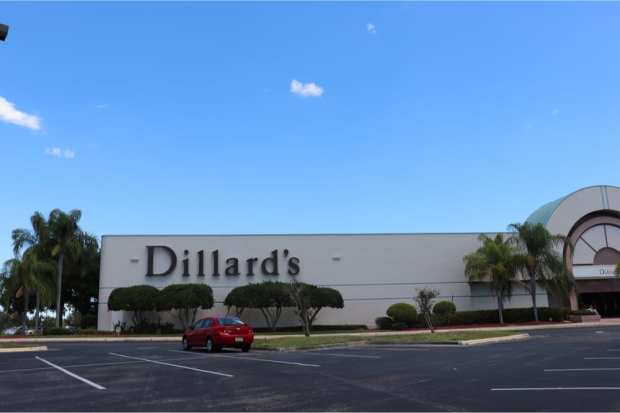Good News? Dillard’s And Nike Say They Have Some

Retail and optimism. Those two terms haven’t been in the same sentence since January, but believe it or not, there were a few places they actually juxtaposed late this week as some retail companies found a reason to be hopeful about the reopening phase of the pandemic.
One came from, of all sectors, a department store. “COVID-19 has impacted every aspect of our business,” said Dillard’s Chief Executive Officer William T. Dillard, II in the company’s earnings statement on Thursday (May 14). “The mall business in general and department stores, specifically, have been particularly hard hit. While our balance sheet was already strong, we took decisive, sometimes difficult, actions to preserve liquidity and ensure our long-term viability. As we re-open stores, we see positive things happening. We believe people are ready to get out and shop. We are hoping this is the start of better times.”
Not that Dillard’s first-quarter earnings were positive. They were not. But the company did display a scenario in which a solid balance sheet and owned rather than leased real estate can make a difference in the financial outlook. The company said its stores started closing on March 19. By April 9, all 285 store locations were temporarily closed. On May 5, the Company reopened 45 stores and added 80 more on Tuesday May 12, with reduced hours. Including its 24 clearance centers, the company has reopened 149 locations to date with plans to reopen 116 more and 5 clearance centers next week. “While management is making no assumptions of future performance based upon only nine days of data,” it said, “the 45 stores that opened on May 5th have produced sales of approximately 56% of last year’s performance while operating at reduced hours.”
About 65 percent of the store’s associates remain on furlough. The company was one of the only transparent examples of using federal programs saying that it “worked to educate furloughed associates regarding the benefits available to them under the CARES Act as well as other assistance programs. The Company has utilized various government programs that provide flexibility for both employers and employees in light of rapidly changing workforce needs. These programs include employee retention credits and shared work programs. Shared work programs allow employers to reduce payroll cost without layoffs by cutting the number of hours employees work each week. Employees are allowed to continue to receive enhanced unemployment benefits as replacement for their reduced wages.”
As alluded to earlier, the Q1 results were admittedly abysmal for the chain. Total retail sales decreased 47 percent. Dillard’s reported no comparable store sales data for the quarter due to the temporary closure of its brick-and-mortar stores as well as the interdependence between in-store and online sales. On the positive side, Dillard’s owns 90 percent of its retail store square footage and 100 percent of its corporate headquarters, distribution and fulfillment facilities. It claims a manageable long-term debt position with next payment due January 2023 ($45 million) and it accessed an $800 million revolving credit facility. It was not specific about results from its eCommerce capacity or results other than to say it has “provided cash flow.”
The other source of positive developments came from Nike. It announced on Thursday that 100 percent of Nike-owned stores and over 95 percent of partner stores in Greater China and South Korea are open. Traffic is still off on a year-to-year basis but that has been offset by a strong eCommerce performance.
“We are encouraged by the recovery we are seeing in Greater China and South Korea as we continue to deepen our connection to consumers,” said Nike President and CEO John Donahoe. “Even more so, consumers around the world are recognizing the need for an active and healthy lifestyle and sport is now more meaningful than ever. With our strong digital foundation, brand momentum and financial position, we believe this will be a catalyzing moment that strengthens Nike’s long-term future.”
